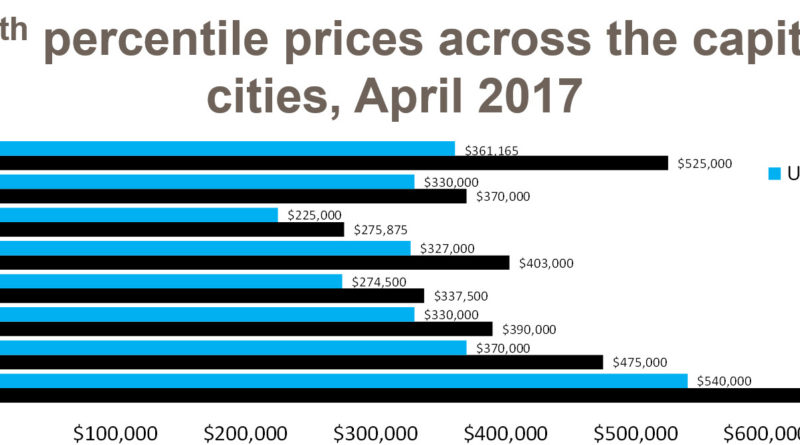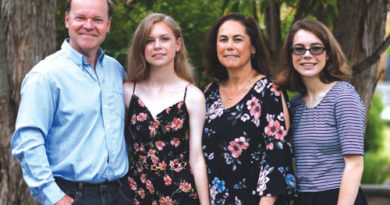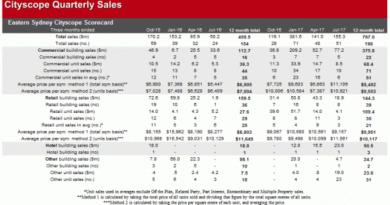How much do you need to enter the housing market?
In this week’s Property Pulse we take a look at the true cost of saving for a deposit and the impost of stamp duty for first home buyers trying to buy a home for owner occupation.
The first chart highlights the 25th percentile prices for houses and units across each of the capital cities. The 25th percentile price has been chosen because it reflects prices at the more affordable end of the housing market and is often more representative of the prices at which first home buyers are looking at to enter the market.
Based on these 25th percentile prices, the cost of stamp duty and transfer fees for houses and units across each of these cities is detailed below. Keep in mind certain states have stamp duty exemptions which exist below specific price thresholds. We have assumed that the first home buyer is purchasing at the 25th percentile price for owner occupation.
- Sydney – $25,733 for houses and $273 for units
- Melbourne – $11,553 for houses and $8,507 for units
- Brisbane – $1,043 for houses and $845 for units
- Adelaide – $16,046 for houses and $12,622 for units
- Perth – $422 for houses and $402 for units
- Hobart – $9,302 for houses and $7,266 for units
- Darwin – $7,557 for houses and $6,337 for units
- Canberra – $15,107 for houses and $8,303 for units.
It is a common misconception that in order to purchase a home you need a 20% deposit. Whilst a 20% deposit is beneficial it is not a necessity however, if you have a deposit of less than 20% most lenders will require you to pay lenders mortgage insurance (LMI). LMI can be paid up front or capitalised into the loan repayments. Either way, if a buyer has to pay LMI it will result in higher mortgage repayments or a larger up front deposit. This analysis has made no provision for LMI costs.



Charts two to five highlight the cost of the deposit along with the stamp duty in each capital city for deposits of 5%, 10%, 15% and 20%. Keep in mind that the stamp duty cost is fixed so the cost increases highlighted reflect the greater savings required for a larger deposit.
When you view the data you can see that saving for a deposit, even a 5% deposit, is a much tougher task in Sydney and Canberra than it is elsewhere in the country. A 5% deposit on a house in Sydney requires $59,033, in Canberra it requires $41,357 while the deposits required for a house in all other capital cities except for Adelaide ($32,921) is less than half of the deposit required in Sydney.
The other challenge for potential first home buyers, particularly in Sydney and Melbourne is that household incomes are not growing at the same pace as dwelling values. Over the 12 months to April 2017, Sydney dwelling values have increased by 16.0% and Melbourne values are 15.3% higher. At the same time, modelled household income data from the Australian National University (ANU) indicates that over the 12 months to March 2017 Sydney household incomes have increased by a comparatively lower 4.6% and Melbourne household incomes are 2.7% higher.
Entry into the housing market remains a real challenge particularly in our largest and most expensive capital cities. Even in cheaper areas, household income growth is fairly slow which makes saving a deposit difficult. It is unclear as to how, absent a big fall in property prices, housing affordability for first home buyers can be greatly improved. Governments have tried incentives such as Grants in the past and they generally just lead to more demand and higher property prices.
The housing affordability challenge has the potential, over the coming years to create greater social pressures. Younger people may look to move away from the commercial hubs of Sydney and Melbourne because housing costs are too high. As a result, businesses may find it increasingly difficult to attract young talent unless they offer opportunities in areas where housing is more affordable, both from a purchase and rental perspective.
Source: CoreLogic Feed







